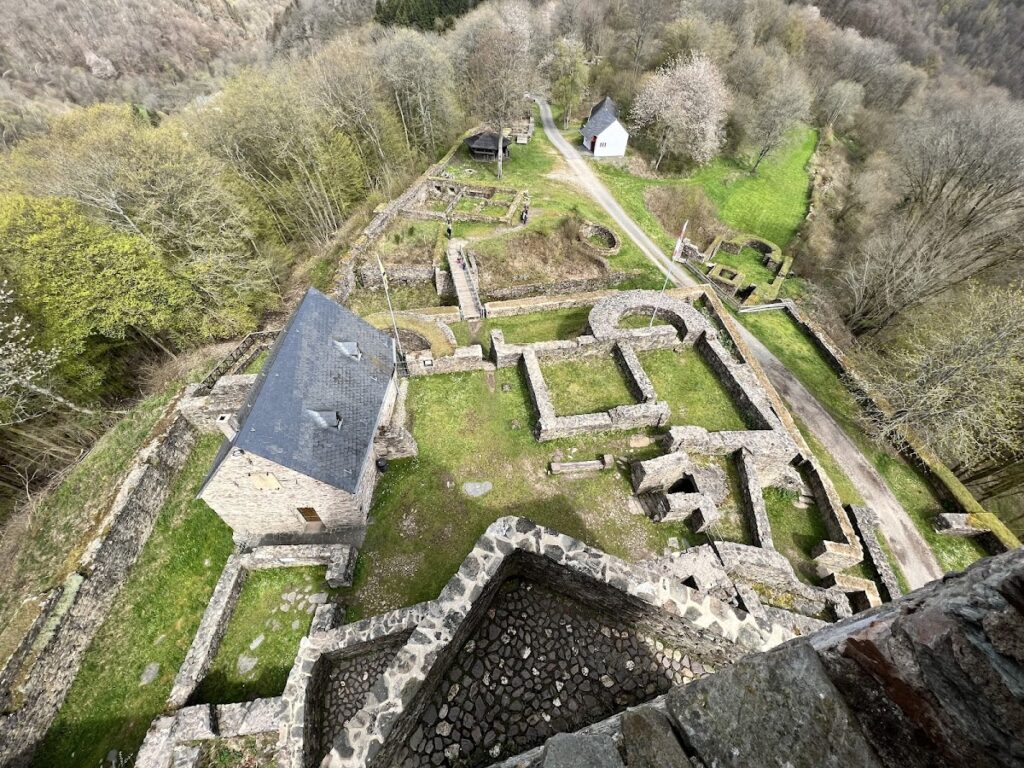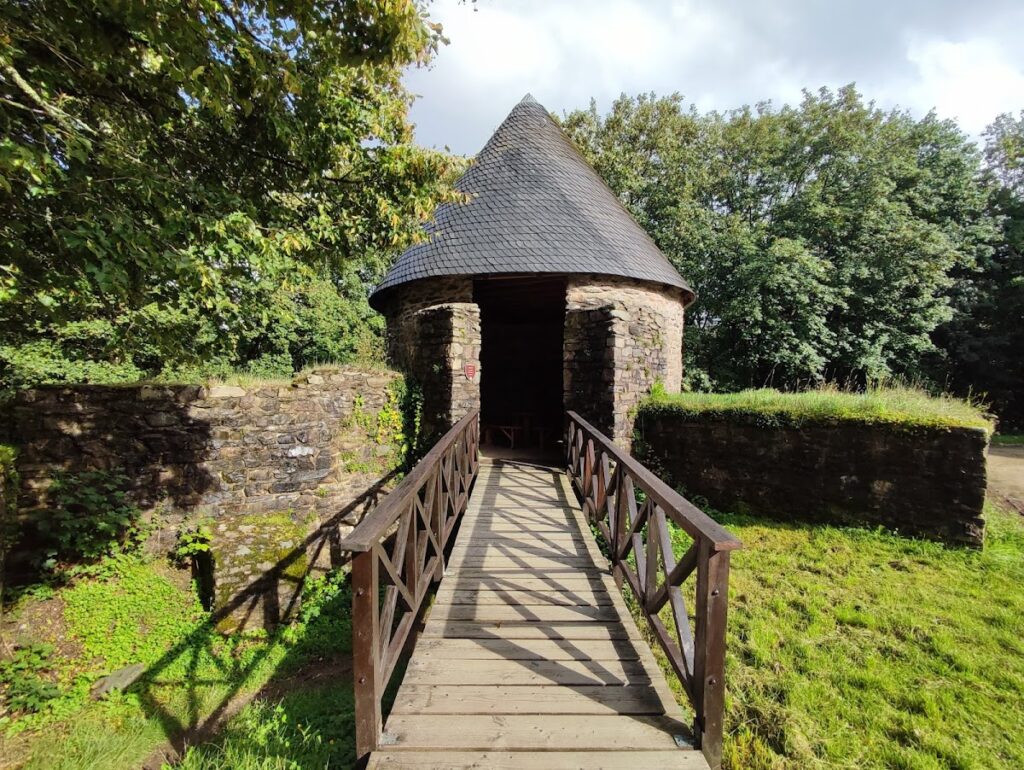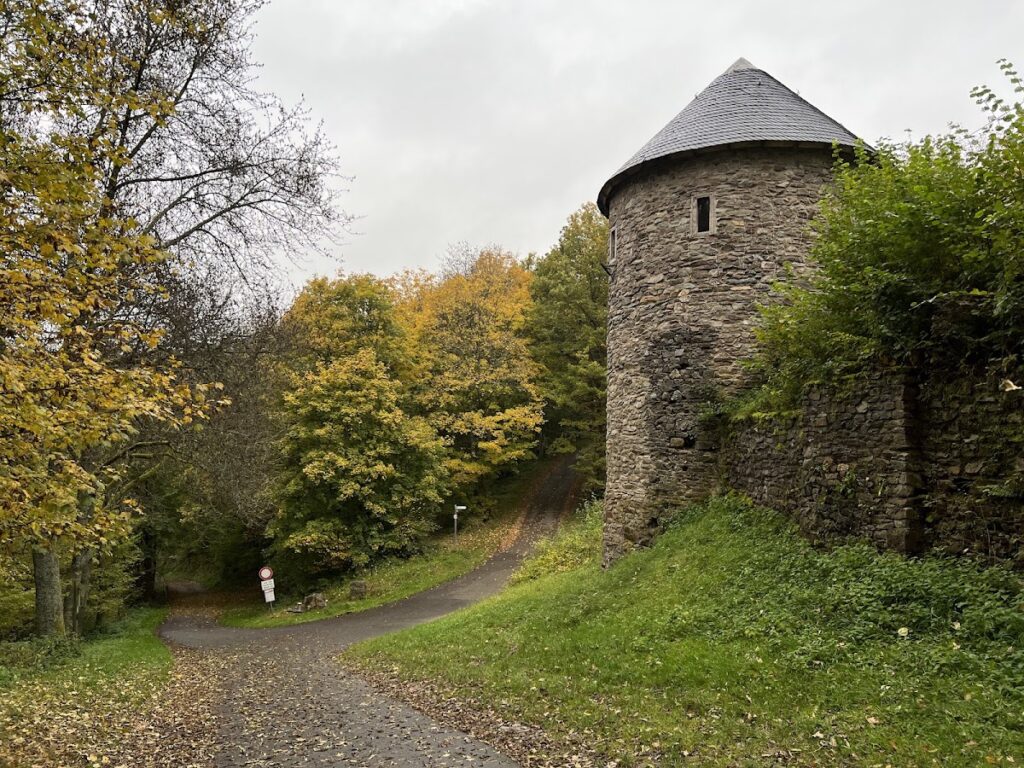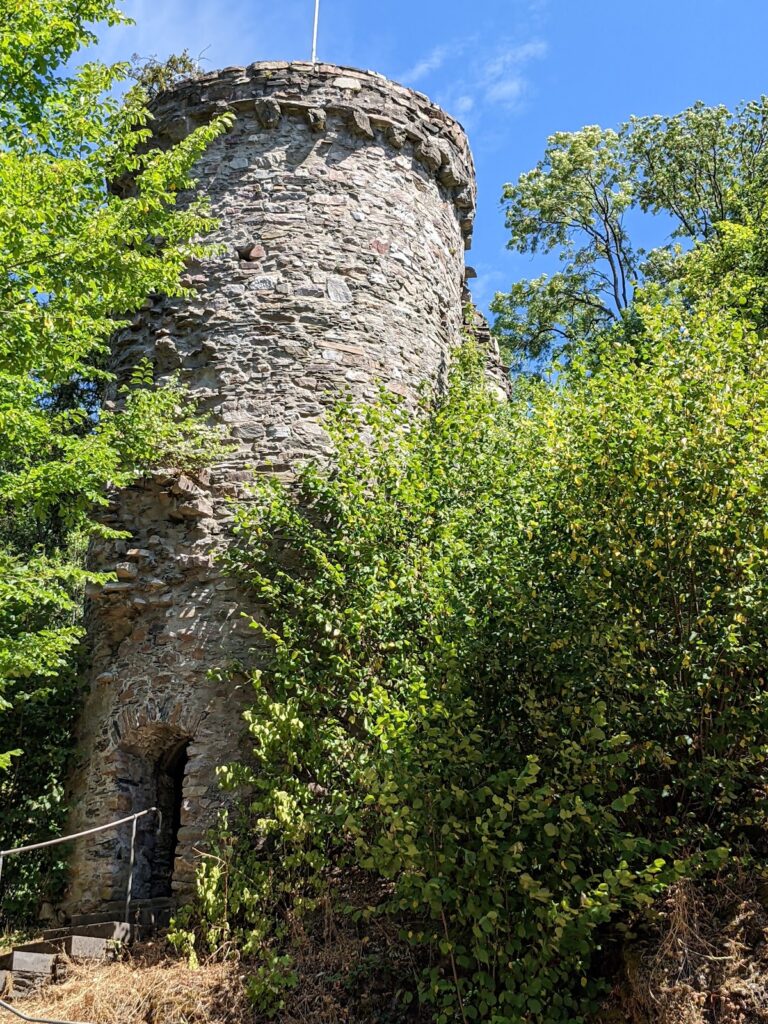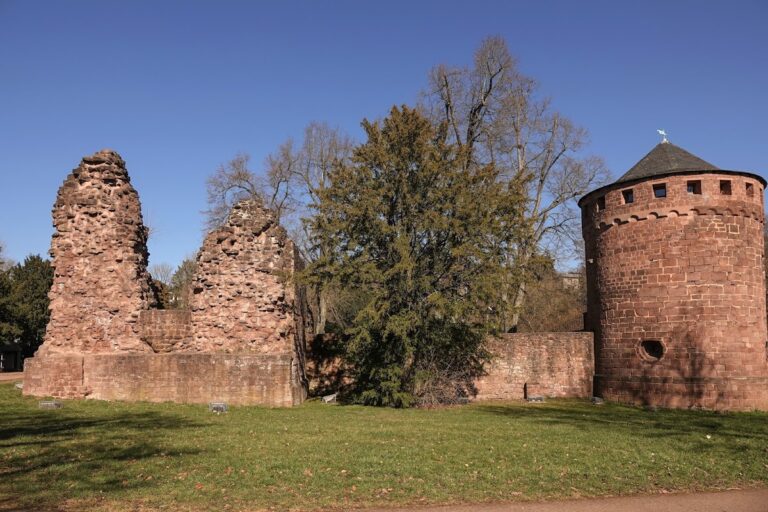Burg Grimburg: A Medieval Castle in Germany
Visitor Information
Google Rating: 4.6
Popularity: Low
Google Maps: View on Google Maps
Official Website: www.burg-grimburg.de
Country: Germany
Civilization: Unclassified
Remains: Military
History
Burg Grimburg stands near the municipality of Grimburg in Germany, built by the noble family known as the Edelherren von Saarbrücken around the year 1150. This castle was established during the medieval period and played a significant role within the territory governed by the Archbishopric of Trier.
In its earliest years, Burg Grimburg became embroiled in regional conflicts linked to the Trier bishopric. Between 1183 and 1190, during what is known as the Trier Schism, the castle was destroyed amid the power struggles. Soon after, following Johann I’s appointment as Archbishop of Trier in 1190, the castle was rebuilt. It gained importance as one of the seven original castles representing the Trier territorial domain, referenced in the Liber annalium, a key historical record of the time.
By the 13th century, Burg Grimburg served as the center for local administration and justice within what was known as the Amt Grimburg, a district under the Trier electorate. Documentation from 1328 confirms this role, but the division of ownership traces back earlier. A ruling from 1258 established that the castle’s control was divided into quarters shared among the Archbishop, the cathedral custodian (Domküster), and the St. Paulin monastery. Simon von Warsberg, who held the title of Domküster and belonged to the Saarbrücken family, played a significant part in securing these ecclesiastical rights during the mid-1200s. The Saarbrücken family itself served as Burgraves—castle governors responsible for defense and administration—for about a century following the castle’s formal inclusion in Trier’s territorial holdings.
In the early 16th century, Burg Grimburg attracted imperial attention. Emperor Maximilian I visited in 1512, reportedly enjoying falconry at the site. A decade later, in 1522, the castle was seized without resistance by Franz von Sickingen, an imperial knight who sought to expand his influence. Later in the century, Archbishop Johann von Schönenberg resided at Burg Grimburg and ordered renovations and expansions to the castle chapel in 1585, enhancing its religious and ceremonial function.
The turbulence of the Thirty Years’ War (1618–1648) brought severe damage to the castle, furthered by its partial destruction by French forces during the Reunions Wars in 1683, when it was deliberately set on fire. Following these events, around 1690, the administrative offices of Amt Grimburg were transferred elsewhere, leading to the castle’s abandonment. Over time, the ruins became a source of building material for nearby villages, contributing to its decline.
Efforts to preserve and restore Burg Grimburg began much later, in 1978, when local groups partnered with municipal authorities. These initiatives aimed to excavate and stabilize the remnants, gradually reconstructing key parts such as the main residential house, the bergfried (a central tower used for defense), the so-called Hexen- (witch) and Küchenturm (kitchen tower), and the gateway tower. Since then, the castle has been maintained as a cultural monument with civil uses integrated into its later history.
The name “Grimburg” likely originates from an old term suggesting a “green castle” or one situated within greenery, rather than from words implying gloom or fear. This etymology reflects the castle’s environment and origins in the surrounding landscape rather than any grim associations.
Remains
Burg Grimburg occupies a prominent position atop the Kittelaufberg spur, rising approximately 448 meters above sea level. The castle complex covers an extensive area measuring about 300 meters long by 90 meters wide, ranking it among the largest Trier territorial castles in terms of surface extension. It sits strategically between the Wadrill and Mühlenbach streams, taking advantage of the natural defensive features offered by the terrain.
The castle’s layout includes several principal components typical of medieval fortress design. A forecourt, or Vorburg, served as the outer area before reaching the main living and defensive structures. Central within the complex stands the bergfried, a tall, rectangular keep that functioned as the primary defensive tower and refuge point. This bergfried, rebuilt as part of late 20th-century restoration efforts, dominates the internal silhouette of the castle.
Adjacent to the bergfried lies the palas, the main residential building where the lord and his retinue would have lived. Near this building, Burg Grimburg also housed a chapel notable for its two distinct levels. The lower chamber acted as a church accessible to those in the forecourt, likely serving the castle’s servants and soldiers. Above it, an upper gallery provided a more private worship space reserved for the archbishop and his officials, accessible via a separate entrance. This architectural division underscores the castle’s dual role as both a spiritual and administrative center.
Originally, the castle featured a pentagonal residential tower, which was later modified. The initial tower was hollowed out and a new pentagonal tower was constructed within or in place of it, indicating a phase of architectural renewal and adaptation over the castle’s lifespan.
Restoration work carried out since 1978 has significantly improved the condition of these primary structures. The bergfried, forecourt towers known as the Hexen- and Küchenturm, and the entrance tower have all been structurally stabilized and partially reconstructed. These efforts have preserved features that reveal the castle’s original form and defensive capabilities while allowing insight into the layout and use of space within the medieval complex.
Oral traditions and historical commentary do not feature prominently in the recorded sources, but the castle’s name and documented history highlight its longstanding presence amid the Rhineland landscape. Today’s remains stand as a testament to Burg Grimburg’s evolving role from noble residence and administrative seat to a ruin carefully maintained through modern preservation initiatives.

